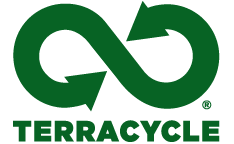Is your packaging wasting brand equity?
You as packaging designers manage some amazing feats: Simultaneously satisfy picky company leaders, fickle consumers and just plain crazy marketing people! You’re to be applauded–it’s a tough balancing act.
But I have something further for you to consider.
Your packaging, for the most part, has one use. What you create encompassed countless hours of meetings, designs, redesigns, factory tooling, wrestling matches and so on. It’s the front line of how your company’s products are seen in the world. It’s the final leg of the marathon that began with coming up with the idea for the product, perhaps testing it out with consumers, a final iteration chosen, then finished when someone decides to grab one of your products off the shelf and buy it.
But once the wrapping’s off, the bottle’s empty, the usefulness is done, that’s the end of the story. Some of it gets recycled. A lot of it doesn’t. Either way, all that brand equity you’ve put into the product is being wasted.
Say again?
Yes, when your packaging has no end of life solution, it’s clumsily being made for you, typically. Terracycle since the start has been about providing one that companies have much more control over: Upcycling it into new products, which often directly use the packaging in its original form in durable goods, retaining brand equity for much longer then one use.
Designing for recyclability is a noble idea and one to be encouraged but, with a fairly limited range of materials, getting recycled in the U.S., it’s just not always possible. Or, in the case of food packaging, safe.
It’s time, both for the sake of saving resources (financial and environmental) to design for reuse where possible, and upcycling by companies like TerraCycle <http://www.terracycle.net> where it’s not.
In both cases, you’re benefitting the company due to extended presence in a consumer’s life, showing you’re out for more than just the sale, and you’ve done your part to keep waste out of the landfill, or worse, littering the ground.
Is there a downside to changing/expanding the way you think about packaging? It could cost more. It could take additional time and resources to implement. In the case of SunChips <http://www.packagingdigest.com/article/510820-Frito_Lay_withdraws_noisy_compostable_SunChips_bag.php> , it could cause consumer backlash.
Yes, sometimes we’re great at coming up with reasons why not. In this economy and any time really, I suggest we all get much less skilled in that arena, and start finding ways to say yes. To better packaging solutions that use less, save more, serve customers just as well, and live on beyond first use. It’s, in my opinion, the only sensible thing to do.
What are your thoughts? Being in the packaging design trenches, where are some opportunities for improvement? Where are the road bumps? Where are the emerging solutions? What are some recent successes to emulate, learn from? Jump into the comments, below.
